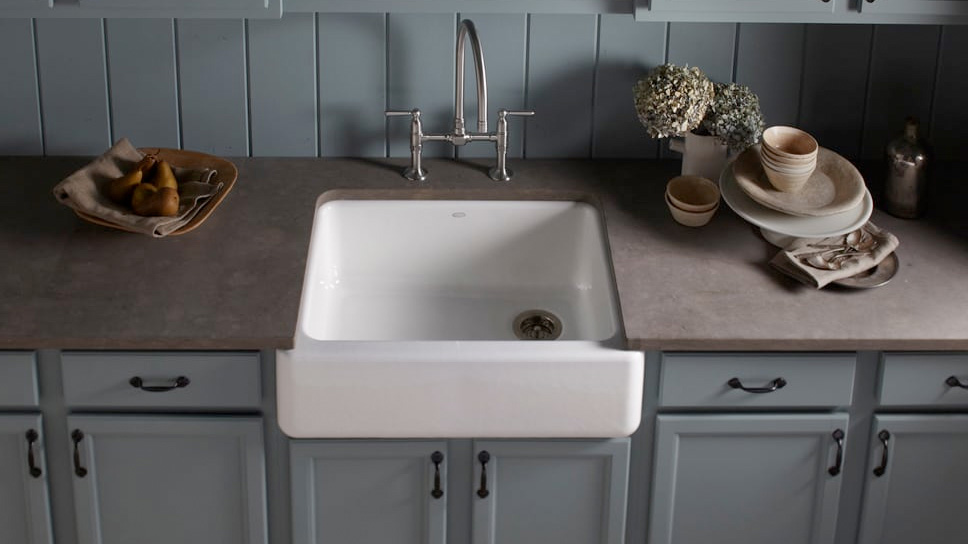
Make kitchen tasks easier with a sink designed for the way you work.
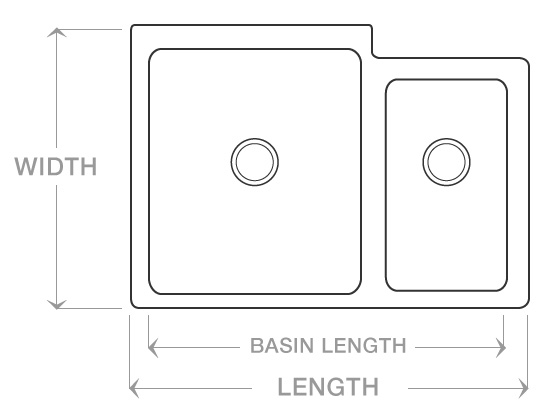
Kitchen Sink Size
Installing a Sink in a New Countertop
Measure the space between cabinets to determine the maximum length of your new sink. Make sure you have enough counter space on either side of the sink for prep, especially in a corner location. Position the sink closer to the front edge of the counter for comfort and access.
Replacing an Existing Sink
Measure the opening in your existing countertop and choose a new sink to fit. Most drop-in sinks have a ½ inch lip so you will need to consider this for a proper installation.
Make sure to consider sink depth. Additions, like garbage disposals, can add significant depth. Consider a deeper sink for larger pots and pans.
Kitchen Sink Installation Types
Drop-In Sinks
Drop-in (or top-mount) sinks are set into a hole cut into the countertop and the are the easiest to install.
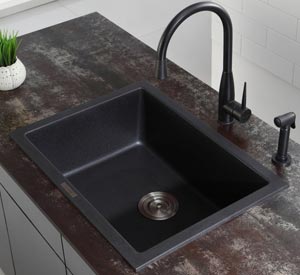
Undermount Sinks
Undermount sinks are attached below the countertop and create a flat surface, making work-area cleanup easy.
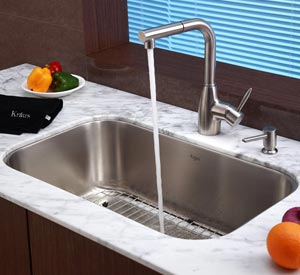
Farmhouse Sinks
Also known as apron sinks, the deep, wide, basins are perfect for washing large pots, pans. Adding a touch of chic country charm, farmhouse sinks are available in a variety of sizes and materials. Some models are available in stainless steel for a more contemporary look.
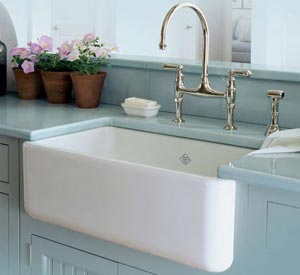
Number of Basins
Kitchen sinks are available in single, double and triple basin configurations. Here are the advantages of each to help you choose which is right for the way you work.
Shopping Tip: “Basin Split” refers to the percentage of space each basin takes up for a double bowl sink. The most common options are 50/50, where the sink bowls are the same size, and 60/40, where one basin is larger for larger pots and pans.
Single Basin Sink
- Wide-open area
- Great for large pots and pans
- Typically much deeper than double or triple sinks
- Drains may be off to one side, where the sink is sloped to one side
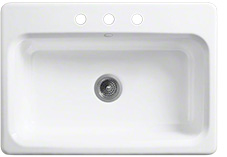
Double Basin Sink
- Choose between equal sized basins or one small and one large basin
- Consider one basin that is larger than the other to hold pots and pans
- Great for working on separate tasks
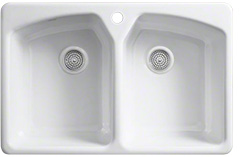
Triple Basin Sink
- Choose two large and one small basin, three equal sized basins, or three basins of different sizes
- Typically wider than standard sized sinks
- The third basin is great for kitchen prep
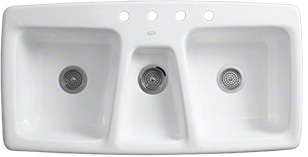
Number of Faucet Holes
The number of holes in your sink will narrow your faucet choices. Extra openings can be covered by escutcheon plates or special hole covers, or filled with accessories like built-in soap dispensers.
-
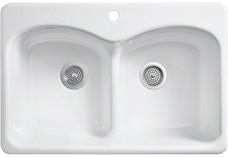 Single hole sinks
Single hole sinks -
 Two hole sinks
Two hole sinks -
 Three hole sinks
Three hole sinks -
 Four hole sinks
Four hole sinks
Drain Placement
Consider the location of existing plumbing and the type of work you do in the kitchen when choosing the drain placement of your new sink.
Off-center drain
- Pro: More Space under the cabinets
- Pro: Plenty of space to wash big pots and pans while allowing water to drain freely
- Pro: Room to prepare food without having it slip down the drain
- Con: Can be difficult for repairs because the plumbing is pushed to the far back or corners
Centered drain
- Pro: Water drains faster than an off centered drain because there is less distance to travel
- Pro: Better access for maintenance or repairs
- Pro: Aligns with a centered faucet
- Con: Large pots and pans may block drainage
-
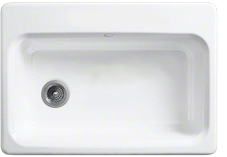 Left drain sinks
Left drain sinks
-
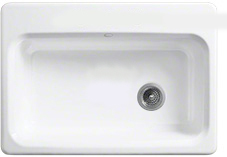 Right drain sinks
Right drain sinks
-
 Center drain sinks
Center drain sinks
-
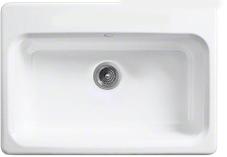 Rear drain sinks
Rear drain sinks
Material
Consider aesthetics and maintenance requirements when choosing the material your sink is constructed of.
Stainless steel
- Great for a modern look
- Most popular style
- Requires cleaning to eliminate water spots

Copper
- Natural anti-microbial qualities
- 100% recyclable material
- Patina changes over time for a unique look
- Requires more care and attention than many materials

Granite Composite
- Nonporous surface is easy to keep clean
- Resists scratches, chipping and discoloration
- More durable alternative to granite

Cast Iron
- Glossy finish
- Easy clean up
- Withstands high heat
- Enamel may scratch over time
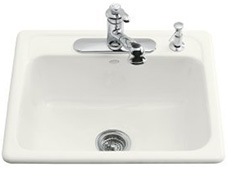
Fireclay
- Non-porous, durable and glossy material
- Resists scratches, stains and chips
- Fired at very high temps for extra durability
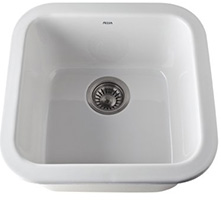
NativeStone
- Handmade by artisans using a strong blend of cement and jute fiber
- Eco-friendly and heavy duty
- Stain-, scratch-, and crack-resistant
- Innovative and remarkably lightweight for cement
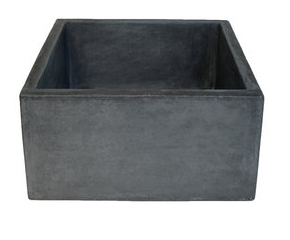

Reblogged this on mbstonecarepros.
LikeLike
Your Awesome! Thank you.
LikeLiked by 1 person
Thank YOU!! 🙂
LikeLike